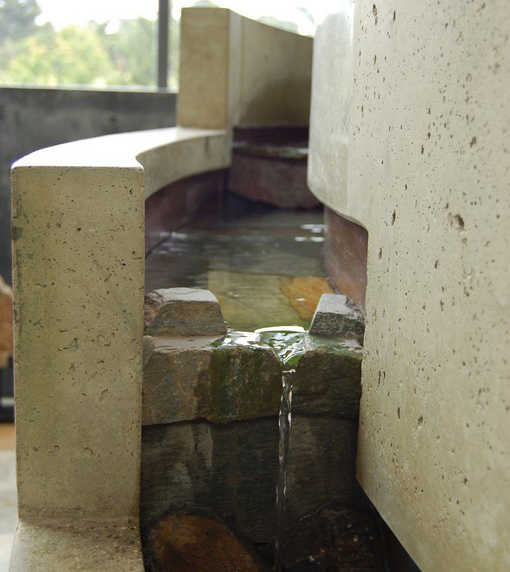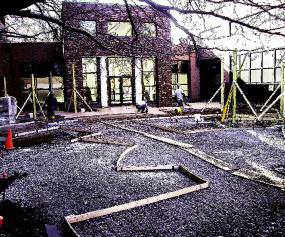engineering
When my family started in the pool and spa service business some 25 years ago, it didn’t take us long to recognize that there was very little available to us by way of education about water chemistry – or, for that matter, about most of the other skills involved in maintaining pools, spas and other waterfeatures. That didn’t make much sense to us, even then. After all, how could an industry devoted to the health, safety and comfort of millions of people function without addressing the need for standardized approaches to water maintenance or
It’s frequently tough to figure out how a person ever finds his or her way into a specific line of work. In my case, for example, I more or less fell into the faux-rock trade, never imagining that what seemed like a blind stumble would ultimately unlock my imagination in a whole range of unexpected ways. It all started when I was working in the oil industry in Alaska in the 1980s. When petroleum prices dropped, I was out of work and moved back to my home town of Tucson, Ariz., where I was hired as a laborer by the Larson Company, which was among the trailblazing firms starting to work in faux rock. I began by mixing concrete and did my fair share of grunt work. As luck would have it, I began showing some artistic promise and in a relatively short time found myself working on major projects and learning the process literally from the ground up. After a couple of hard years, I became a superintendent, a promotion that led to my involvement in major overseas projects, including aquariums in Tokyo and Osaka, Japan, as well as an extended stay in Italy. These were wonderful, formative experiences, but eventually I struck out on my own and
More than three years ago, I was approached by a talented landscape architect (and good friend) to look at project with an interesting twist: the celebration of the agricultural history of a well-known California city. I’ve long been fascinated by history and have taught the history of art and architecture in a variety of settings, so when Lance Walker (then principal at The Collaborative West, San Clemente, Calif.) called me, I was keenly motivated to hear more about his plan to pay homage to those who had jump-started a major modern community by harnessing a natural watercourse to
By Fu-Tung Cheng I’ve never been entirely comfortable with the term “decorative concrete.” To me, the pairing of the words has always implied that one merely applies material over a substrate in the way a baker might apply icing to decorate a cake. Instead, I see concrete as inherently profound. More than appliqué, it is a medium that has long been used functionally as well as expressively. In my own case, I feel far more creatively engaged in my work when I merge my thinking about those dual potentials of function and art. Historically, in fact, I believe that when the two become an inseparable one, we recognize and celebrate these works as rising to the level of great design. In my own case, I began using concrete as an expressive medium a few decades back, when I was among the pioneers in designing and installing concrete countertops in contemporary kitchens. As both designer and builder, by the year 2000 I had
When these clients decided that they wanted to have a swimming pool, they knew above all else that they did not want another box of blue water. By contrast, as avid patrons of Disney World, the Princeton, N.J., homeowners had decided that their pool should be what they called “Disney natural” – not as completely naturalistic as a real pond, but natural enough so that they and their children could suspend disbelief and pretend that they were swimming in a pond. Before we came on the scene, the clients had
Part I: Setting the Course Theatrical vitality has to do with structuring stories and creating dramatic narratives that establish sensations of expectation, surprise and reward. It also involves the development of sympathetic, interesting characters as well as engagement in “the moment” – the feeling that a special and wonderful entertainment experience is unfolding before the audience in a specific time and place. Mastering all of that is a tall order under ordinary circumstances, so you can imagine how we felt in trying to help make it happen on the exposed, unpredictable stern deck of Oasis of the Seas – a prestigious ship that currently claims the title of world’s largest cruise liner. Fluidity – a Los Angeles-based water design studio – pursues unique, progressive projects for an international clientele that includes architects, landscape architects, civic institutions and real estate developers. Through the years, we’d had considerable experience with theatrical
Decorative-concrete artist Tommy T. Cook has built a reputation for being able to create almost anything from concrete using an array of highly refined and boldly artful processes. In this feature, he demonstrates a portion of that skill by describing how he uses the gargantuan Gunnera plant to craft watershapes in which replicas of the plant’s outsized leaves serve as uniquely natural fountain basins and spillways. Ask anyone who’s tried and it’s almost certain you’ll hear that replicating nature isn’t easy. That hasn’t stopped artists throughout history from trying, however, or from making natural forms an influential source of artistic imagination and ambition. The great thing about using nature for inspiration is that it’s all around us and all we need to do to draw on it is open our eyes, make good choices and decide how what we see can be used in our creative endeavors. In my case, I’d worked in decorative concrete for a long time before nature crawled under my skin. It began when
There’s no denying the difficulty of building a high-quality inground pool, but the welcome fact is that the earth can conceal a range of little imperfections, from small leaks to minor structural defects. When you build a pool or some other watershape above grade as an integral component of a multi-story building, however, everything you do is magnified because the work is always exposed. Essentially, you lose the margin for error that might be possible with an inground installation. This past spring, work was completed on two high-rise watershapes our firm engineered as part of L.A. Live, a multi-purpose, entertainment-oriented complex situated near the Staples Center and the Los Angeles Convention Center in downtown Los Angeles. The pool/spa combinations were placed on the fourth and twenty-sixth floors, and although they have simple rectangular forms, they represent the absolute
Have you ever noticed how often the costliest part of a project turns out to be something that will ultimately be hidden from view? This happens quite frequently in projects involving any sort of slope, where the piers and grade beams beneath swimming pools, for example, can cost far more than the rest of the overall project. In my own work, I’ve noticed this budgetary quirk most frequently when it comes to retaining walls, where providing the foundation they need to withstand the forces applied by a slope can be startlingly extensive and expensive. It’s not what you’d call glamorous work, but it certainly is important – and will vanish completely from view. Most often, we’re called on to build these walls when
For professionals who tirelessly commit themselves to excellence in all aspects of their work, challenging projects are the butter on the bread. At Drakeley Swimming Pool Co. of Bethlehem, Conn., we truly enjoy jobs with higher-than-usual degrees of difficulty because they generally involve us with clients who have strong ideas about what they want, force us to develop solutions to unique and interesting problems and see us perform on a level that invariably makes us proud. As we see it, these jobs are the reward we get for years of focusing on doing our absolute best. True, these projects can be tough, but we’ve found that by sticking to our “quality without compromise” philosophy, we’ve managed to thrive through tough times and have always earned our share of interesting commissions. It’s proof of the old adage that good things follow hard work, even in a soft economy. That was certainly






















